
I Corps was an army corps in existence as an active formation in the British Army for most of the 80 years from its creation in the First World War until the end of the Cold War, longer than any other corps. It had a short-lived precursor during the Waterloo Campaign.
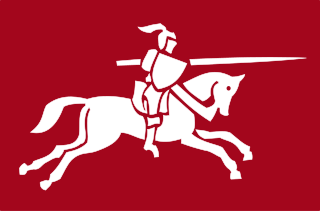
VIII Corps was a British Army corps formation that existed during the First and Second World Wars. In the latter, it took part in the Normandy Campaign in 1944, where it was involved in Operation Epsom and Operation Goodwood. It would later play a supporting role in Operation Market Garden and finish the war by advancing from the Rhine to the Baltic Sea.
This is an outline order of battle of the British First Army on 4 May 1943 during the Tunisian Campaign of World War II.

The Rifle Brigade (The Prince Consort's Own) was an infantry rifle regiment of the British Army formed in January 1800 as the "Experimental Corps of Riflemen" to provide sharpshooters, scouts, and skirmishers. They were soon renamed the "Rifle Corps". In January 1803, they became an established regular regiment and were titled the 95th Regiment of Foot (Rifles). In 1816, at the end of the Napoleonic Wars, they were again renamed, this time as the "Rifle Brigade".
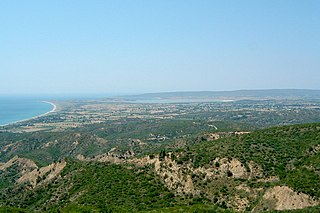
The landing at Suvla Bay was an amphibious landing made at Suvla on the Aegean coast of the Gallipoli peninsula in the Ottoman Empire as part of the August Offensive, the final British attempt to break the deadlock of the Battle of Gallipoli. The landing, which commenced on the night of 6 August 1915, was intended to support a breakout from the ANZAC sector, five miles (8 km) to the south.

Lieutenant-General Sir Brian Gwynne Horrocks, was a British Army officer, chiefly remembered as the commander of XXX Corps in Operation Market Garden and other operations during the Second World War. He also served in the First World War and the Russian Civil War, was taken prisoner twice, and competed in the modern pentathlon at the 1924 Paris Olympics. Later he was a television presenter, wrote books on military history, and was Black Rod in the House of Lords for 14 years.

General Sir Montagu George North Stopford was a senior British Army officer who fought during both World War I and World War II. The latter he served in with distinction, commanding XXXIII Indian Corps in the Far East, where he served under Field Marshal Sir William Slim, and played a significant role in the Burma Campaign, specifically during the Battle of Kohima in mid-1944.

General Sir John Tredinnick Crocker, was a senior British Army officer who fought in both world wars. He served as both a private soldier and a junior officer in the First World War, and as a distinguished brigade, division and corps commander during the Second World War, where his most notable role was as General Officer Commanding (GOC) of I Corps during the D-Day landings on 6 June 1944, leading the corps throughout the subsequent campaign in Western Europe until Victory in Europe Day (VE-Day) just over eleven months later.

The 6th Armoured Division was an armoured division of the British Army, created in September 1940 during the Second World War and re-formed in May 1951 in the UK.

Lieutenant General Sir Frederick William Stopford, was a British Army officer, best remembered for commanding the landing at Suvla Bay in August 1915, during the Gallipoli Campaign, where he failed to order an aggressive exploitation of the initially successful landings.

The 29th Infantry Brigade was an infantry brigade unit of the British Army. It was originally raised in 1914 and saw service during the First and Second World Wars and the Korean War.

Operation Vulcan and Operation Strike were the final ground attacks by the Allied forces against the Italian and German forces in Tunis, Cape Bon, and Bizerte, the last Axis toeholds in North Africa, during the Tunisian campaign of the Second World War.

X Corps was a corps of the British Army that served in the First World War on the Western Front before being disbanded in 1919. The corps was re-formed in 1942 during the Second World War and saw service in the North African Campaign and the Italian Campaign where it came under command of the US Fifth Army and the British Eighth Army.
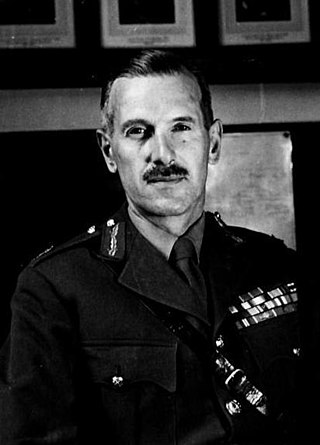
General Sir Sidney Chevalier Kirkman, was a British Army officer, who served in both the First World War and Second World War. During the latter he commanded the artillery of the Eighth Army during the Second Battle of El Alamein, following which he commanded the 50th Division during the Allied invasion of Sicily and XIII Corps throughout most of the Italian Campaign. He later became Director General of Civil Defence in the Civil Defence Department from 1954 to 1960.

13th Corps was a corps-sized formation of the British Army that fought on the Western Front during the First World War and was reformed for service during the Second World War, serving in the Mediterranean and Middle East throughout its service.
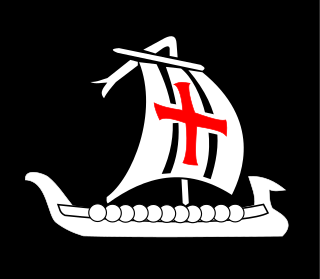
V Corps was an army corps of the British Army that saw service in both the First and the Second World Wars. It was first organised in February 1915 and fought through the First World War on the Western front. It was recreated in June 1940, during the Second World War and was substantially reorganised in 1942 for participation in Operation Torch. It fought through the Tunisia Campaign and later the Italian Campaign.

Lieutenant General Sir Charles Walter Allfrey, was a senior British Army officer who served in both the world wars, most notably during the Second World War as General Officer Commanding of V Corps in North Africa and Italy from 1942 to 1944.

XII Corps was an army corps of the British Army that fought in the First and Second World Wars. In the First World War, it formed part of the British Salonika Force on the Macedonian front. In the Second World War, it formed part of the British Second Army during Operation Overlord and the subsequent North-West Europe Campaign of 1944-45.

General Sir George Watkin Eben James Erskine was a British Army officer from Hascombe, Surrey. After he graduated from Royal Military College, Sandhurst, Erskine enlisted in the King's Royal Rifle Corps and saw action on the Western Front of World War I. During World War II, he commanded the 7th Armoured Division from 1943 to 1944. After World War II, Erksine commanded counterinsurgency operations against the Kenya Land and Freedom Army (KLFA) during the Mau Mau rebellion.
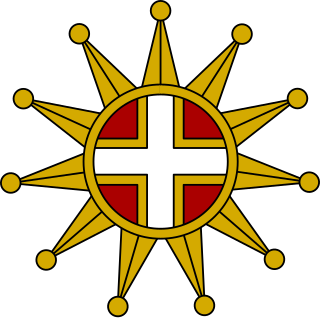
XI Corps was a corps-sized formation of the British Expeditionary Force, active during the First World War that served on the Western Front and in Italy. It was recreated as part of Home Forces defending the United Kingdom during the Second World War.




















